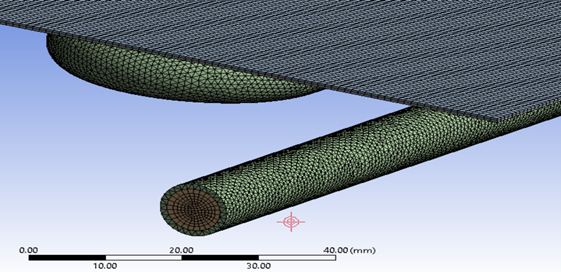Numerical Investigation of PV/T System by Using Graphene Based Nanofluids
DOI:
https://doi.org/10.37934/armne.18.1.931Keywords:
Solar energy, photovoltaic thermal, simulation, nanofluids, graphene, efficiency, computational fluid dynamicsAbstract
The effective use of solar radiation can be maximized by the implementation of a novel hybrid device referred to as a photovoltaic thermal collector (PV/T), which has the capability to simultaneously generate both electrical and thermal energy. As temperature increases, the efficiency of the photovoltaic (PV) cell drops. The present work employs graphene nanofluids as a means to decrease the temperature of the system in order to evaluate the photovoltaic thermal (PV/T) performance. The PV/T system is subjected to Computational Fluid Dynamics (CFD) simulation, wherein graphene nanofluids of different volume concentrations (0%, 0.1%, 0.2%, and 0.3%) and mass flow rates (0.065, 0.075, and 0.085 kg/s) are employed. The PV/T system demonstrated enhanced performance as a result of the implementation of the proposed approach, which effectively reduced the temperature of the solar cell during the period of maximum solar radiation, spanning from 9 AM to 4 PM. The utilization of the system was employed for the generation of thermal and electrical energy due to its respective thermal and electrical efficiency of 67% and 11.5%. The completed research has demonstrated that the integration of graphene nanofluids has the potential to enhance the efficiency of PV/T systems.









